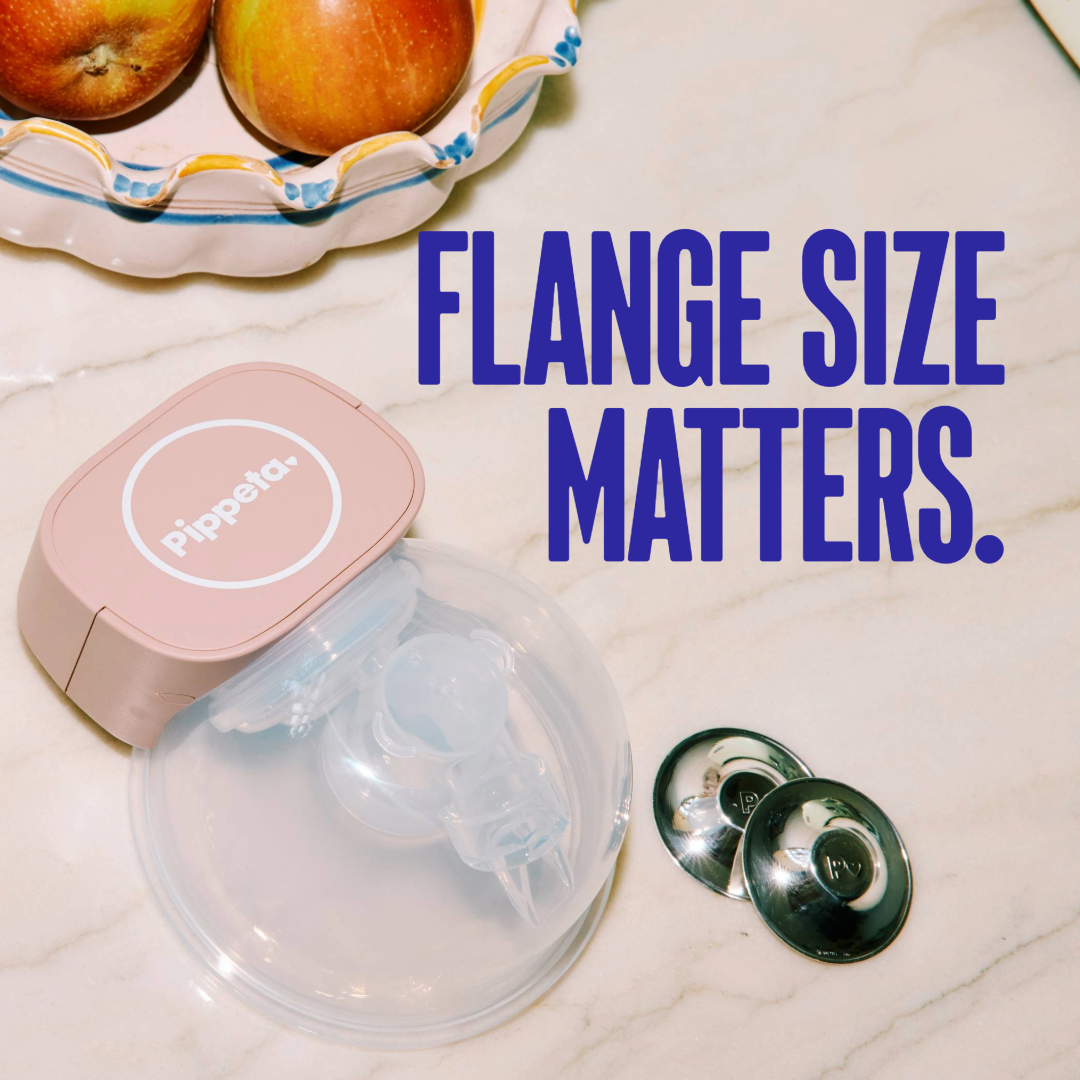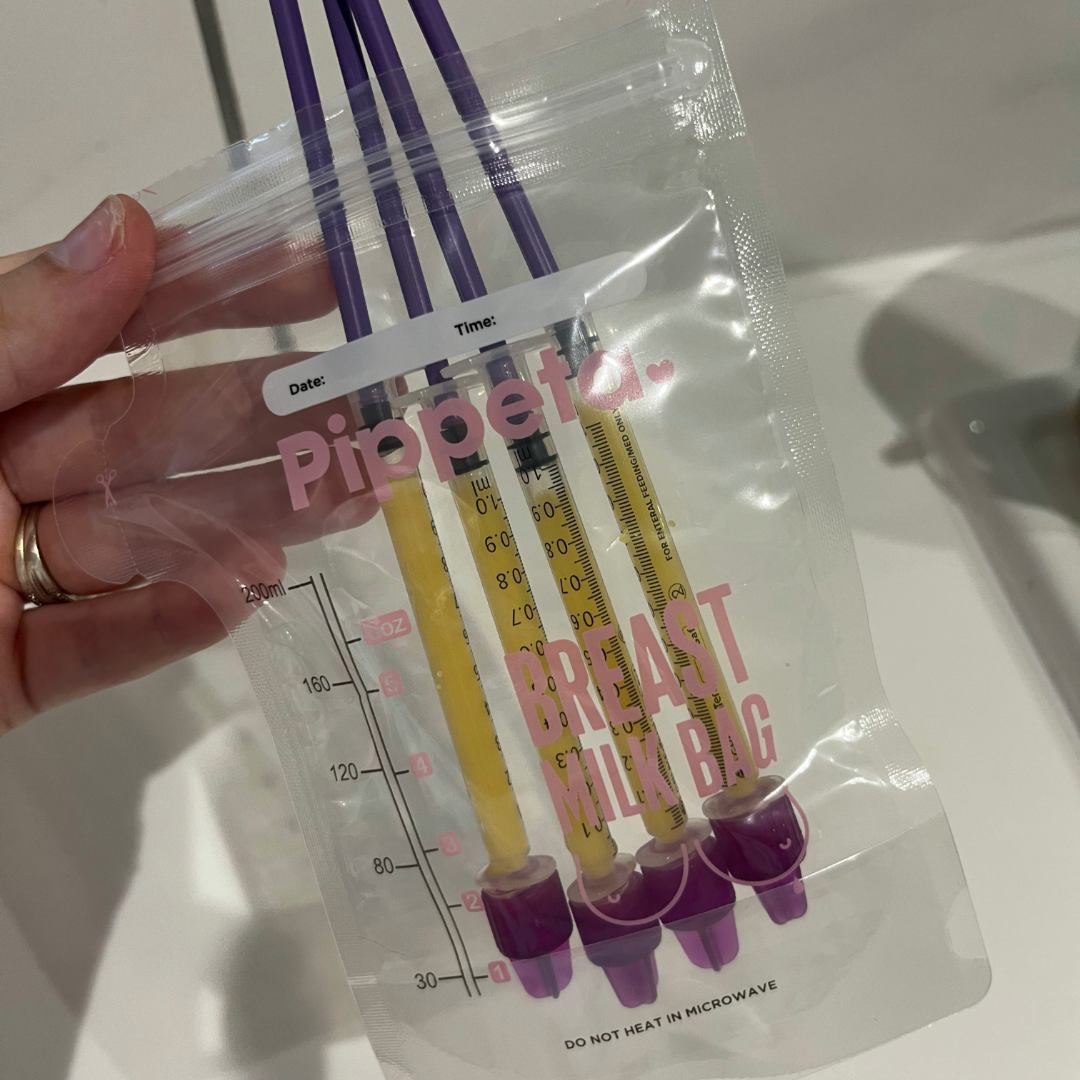

Let's Talk About Flange Sizing:
Hey Mamma's, this week we checked in with our experts at Pippeta who shared some important updates on the latest guidance around how to measure correctly for your breast pump flange size.
We know how overwhelming it can be to figure out what size you need, especially when traditional methods rely on guesswork or trial and error. So, we've created this mini online guide for your reference.
In this guide we will take you through why flange size matters, how to measure for the correct fit, how to spot the signs of an correct flange fit and some top tips from our experts to ensure you have the most successful pumping journey possible.
Why Flange Size Matters
Finding the right flange size is essential for ensuring both comfort and effective milk expression. Here are a few reasons why paying attention to flange size can be beneficial on your pumping journey:
1. Comfort is key – A correctly sized flange can mean the difference between a smooth, pain-free pumping session and one that leaves you sore and frustrated.
2. Better milk flow – More recent studies have shown that when your flange fits well, your milk flows more easily. That means more milk, less stress, and fewer worries about things like clogged ducts or engorgement.
Prevent issues before they start – A poor fit can make it harder to remove milk from the breast efficiently, which may lead to blocked ducts or even mastitis (ouch!). Keeping milk moving is one of the best ways to avoid these common hurdles.
So if pumping’s feeling a little 'off' or you’re not seeing the output you expected, take a look at your flange fit. A small adjustment can make a big impact and we’re here to help you find your perfect match.
New Guidance: Size to the Nipple Tip
Previously, it was recommended to measure the base of the nipple and add 1-4mm when choosing a flange. New, up-to-date guidance now suggests measuring the nipple tip and choosing a flange that matches that exact size.
For example:
- If your nipple tip measures 13mm, start by trying a 13mm flange.
- Don’t automatically size up. Instead, test flanges 1mm above and below your measurement (e.g., 12mm, 13mm, 14mm) to find your ideal fit.
Visual Fit Guide (Described)
As you can see from the visual imagery at the top of this blog, when checking your flange fit, there are certain things to look for and here they are explained in more detail:
Too Small: Nipple is flattened, squashed, or doesn’t move freely in the tunnel.
Ideal Fit: Only the nipple is drawn into the tunnel and lightly touches the sides. There is no areola being pulled in, no swelling of the areola is seen.
Too Big: Some areola tissue is drawn into the tunnel. The nipple may not touch the tunnel sides, swelling of the areola is seen.
Way Too Big: A large portion of areola enters the tunnel. The nipple moves around too freely and doesn’t make contact with the tunnel walls, a lot of swelling of the nipple and areola is seen.
Top Tips from Our Experts
We asked our experts what additional information they would add to this guide and here are their top tips:
1. Measure both nipples
Ever thought "hmm my boobs are two different sizes?" Most of us right? So, think the same with your nips, they may differ in size. It's always best to be safe and measure them both independently.
2. Reassess your fit regularly
What works in the beginning of your journey may be totally different two months in. If anything starts to feel 'off' then a good place to start is always by reassessing your flange fit. Some examples of why you would need to re-evaluate your flange fit would be:
- In the first few days after birth, your breasts may begin to feel fuller, swollen, or engorged, which can temporarily change your nipple size and shape. When that postpartum swell eases be sure to check your fit!
- If you’re pumping more often (e.g. to increase supply or build a freezer stash), your nipples may change slightly over time, meaning you might need a different size for ongoing comfort and efficiency.
- If you've experienced nipple trauma or soreness from a poor flange fit early on, or from issues with your latch, switching sizes as your body heals can often make all the difference.
- Changes in your menstrual cycle, return of periods, or hormonal fluctuations can also affect breast and nipple tissue, bare this in mind when embarking on your pumping journey.
3. Don't just measure!
Measuring for the correct flange is just one piece of the puzzle, how your chosen pump works with your body is equally as important.
Once you’ve measured for your correct flange size, it’s time to tune into your body and experiment with your breast pumps modes and suction levels. The goal is to create a comfortable, effective pumping experience where your flange and pump work in perfect harmony. What feels gentle and efficient for one mum may feel too strong or too light for another.
Every Pippeta pump includes:
- 4 modes which offer different pulls on the nipple. It is complete personal preference as to how strong of a pull you feel comfortable with. Once you find your mode stick to it unless you experience issues with output.
- Our pumps also offer 12 suction levels (from 60mmHg to 300mmHg), so you can find the perfect balance of speed and strength to encourage milk flow without discomfort. Within the 15-20 minutes it usually takes to complete a session you can also play about with a combo of speeds to ensure it is the most comfortable and efficient experience as possible.
- Aim for multiple let downs per pumping session.
Here at Pippeta we usually advise to start low and slow, especially if you’re new to pumping. Gradually increase suction until you find a level that gives you a good milk flow without any discomfort. If things don’t feel quite right, even with a well-sized flange, adjusting your settings can make a huge difference.
Listening to your body is key. Pumping shouldn’t hurt, and with the right flange and settings, it doesn’t have to.
Signs of a Good Flange Fit
So, you've measured, followed the guide and played around with your pump, how do you know if your flange fits?... here are your signs:
- Pain-free pumping (Yeyyyy)
- Milk sprays or consistent flow of milk
- Only the nipple moves in the tunnel (no areola)
- No swelling, redness, or friction after pumping
At Pippeta, We’re Here to Support You
Our flanges are available in a wide range of sizes, and we’re always happy to help you find your best fit. Remember, every Pippeta breast pump comes with free IBCLC support meaning you have access to a consultant for one-to-one support whenever you feel you need it. Struggling to follow this guide? and need some extra help with your fitting, simply drop an email to hello@pippeta.co.uk and we will make sure you get the correct advice.
Further Reading
https://www.babiesincommon.com/flange-fits-guide
Comfort Meets Science: Revolutionising Flange Fitting for Pumping Success
Sources:
Anders LA, Mesite Frem J, McCoy TP. Flange Size Matters: A Comparative Pilot Study of the Flange FITSTMGuide Versus Traditional Sizing Methods. J Hum Lact. 2025 Feb;41(1):54-64. doi: 10.1177/08903344241296036. Epub 2024 Nov 30. PMID: 39614713; PMCID: PMC11829504.
Early Breast Milk Improvement Project Toolkit. (2025,
February). Health Innovation Wessex. Retrieved June 25, 2025, from https://healthinnovationwessex.org.uk/projects/658/early-breast-milk-improvement-project-toolkit













